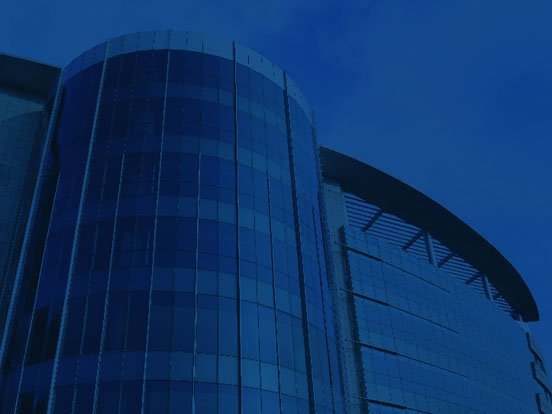Leading with Technology in a Connected World – article by Roman Rafiq
May 18, 2016
The Times of PAMAC
The staggering speed at which Technology has permeated into every aspect of our lives and work, today, it’s impossible to imagine that there are more connected and digital devices than people. Today, technology has gone truly global. One billion people in the world are using four billion connected things (IoT 2016). We call this IoT – internet of things.
We are living in “smart” cities, booking “Smart cabs” ordering “Smart groceries” and sleeping to “Smart ACs”. Everything from homes, cars, watches and appliances are now “smart devices”. And consumers have begun to expect such dynamic connectivity and “on-demand” services across all industries, be it Travel, BPO, Retail, Manufacturing, Transportation and others. It’s safe to say that companies today are all ‘digital’ entities or rather technology companies.
So what marks the ‘gold’s rush’ in technology? From ‘big data’, ‘cloud computing’, Mobility and IoT to cognitive computing – these are the technology must-haves for smooth handling of processes, optimal efficiency and flexibility to accommodate market changes. While some have managed to utilize them exponentially in their businesses, others are trying. The data generated from these connected devices, discussions and machines is enough to create big opportunities and even bigger challenges.
Who’s got the customer? Big data, Internet of Things (IoT), cloud-based computing, and predictive analytics are driving customer behavior and new market products and services. IoT’s rapid digitization of physical things or machines as connected smart devices is rapidly impacting business models, service offerings and customer expectations. According to McKinsey the impact of the Internet of Things (IoT) industry could equal about 11 percent of the world’s economy in 2020. Let’s look at some recent numbers:
- The global spending on the Internet of Things (IoT) security will reach $348 million (roughly Rs. 2,321 crores) in 2016 a 23.7 percent increase from last year (roughly Rs. 1,877 crores), (Gartner report).
- Spending on the IoT security is expected to reach $547 million (roughly Rs. 3,648 crores) in 2018.
Technology has multiplied the number of points of interaction and supplied businesses with a depth of information data. Businesses frequently have to rethink their strategies and business models and seek opportunities to innovate and improve their operational performance. As a critical driver of global trade organizations constantly need to adapt to new business technologies, customer services and an increasing demand for quality, security and cost efficiency. Example, the move from on-premise to SaaS is driving the need for new business models, focused skills and capabilities. The cost savings created by technology can further be reinvested in newer technologies or smarter strategies. Like Mobile that plays a stellar role in apps and real-time dashboard and alerts that are increasingly crucial in timely management and reducing error.
The Rise of Data and Predictive Analytics: Technology is headlined by data’s growing role in the every sector, device and process. The consumer is moving beyond simply receiving consumer information on a website to being engaged in new modalities, including information-on-the-go, wearables, personalized infotainment, apps and more. According to a report by IDC, the world will generate 50x more data in the next decade, from external and internal sources; structured and unstructured. Its critical to keep it easily accessible and scalable across teams and geographies. Data gave rise to Predictive Analytics which has been around at least since we know of weather forecasting. Today, almost all businesses across industry sectors, whether small or big, are able to extract benefits from usage of Predictive Analytics. While Airlines analyze bookings data to predict sales and pricing, financial analysts analyze earnings data to predict potential revenue growth.
Data is extremely valuable in not just driving sales, but also impacting future decisions and growth plans. Quick facts:
- Digital data is expected to more globally double every two years.
- About 90% of the data currently generated is unstructured.
- In a few years about 80% of the information that companies could come from external sources.
Organizations have to act fast, with improved skills, organizational vision and more secure and scalable processes and services. This intelligent automation of services, technology and people is dependent largely on cloud that integrates existing technology and multiple systems for single unified view of the data. From crew assist technologies and infotainment to mobility, organizations optimize “on-demand data” in the movement of people, experiences and services.
Imagine this: Pharmaceutical cargo today can be tracked in real-time, with temperature notifications. Airlines and airports can provide travellers with information-on-the-go with NFC’s. It’s all about the internet of your things. But with great technology comes great challenges.
Look before you leap: The speed at which technologies and the environments in which they are applied are evolving, means the threat of keeping assets secure is not soft, but quite clear and present. When one is acquiring massive amounts of data, or shifting processes or integrating new technologies, there is a bigger risk at stake – data security. Take for instance the Sony hack or one of the largest OTA, Booking.com hack. As data implodes via social, mobile and cloud, there isn’t anyone who can keep their blinkers on. Businesses in particular are highly susceptible to attacks from terrorism, hackers and even political quarters.
The security detailing will need to span IT operations, applications, and infrastructure. The critical action point for managers is to prepare and have a plan ready as new vulnerabilities and zero-day attacks get attempted every day. Network defenses must constantly adapt.
While processes, technologies and solutions have been identified, securing and standardizing them is mostly still ongoing. There are few companies offering governance and even fewer managing data securely.
Let’s put this very simply. We are at the brink of a driverless car on our roads. What happens, if there’s a security breach? Now take that up a notch to Banks, Financial institutions or aviation. There is no one-fix solution. To meet these challenges in data and security require distinct strategies, concentrated investments and focused governance.
Companies need to determine focusing the investments to provide the best opportunities for business value and growth and keep the brand and data secure to stay competitive in the race of being ‘on-demand’



